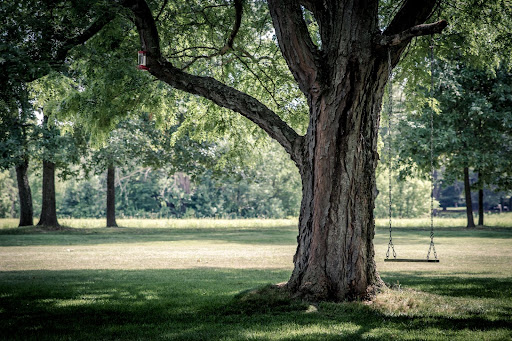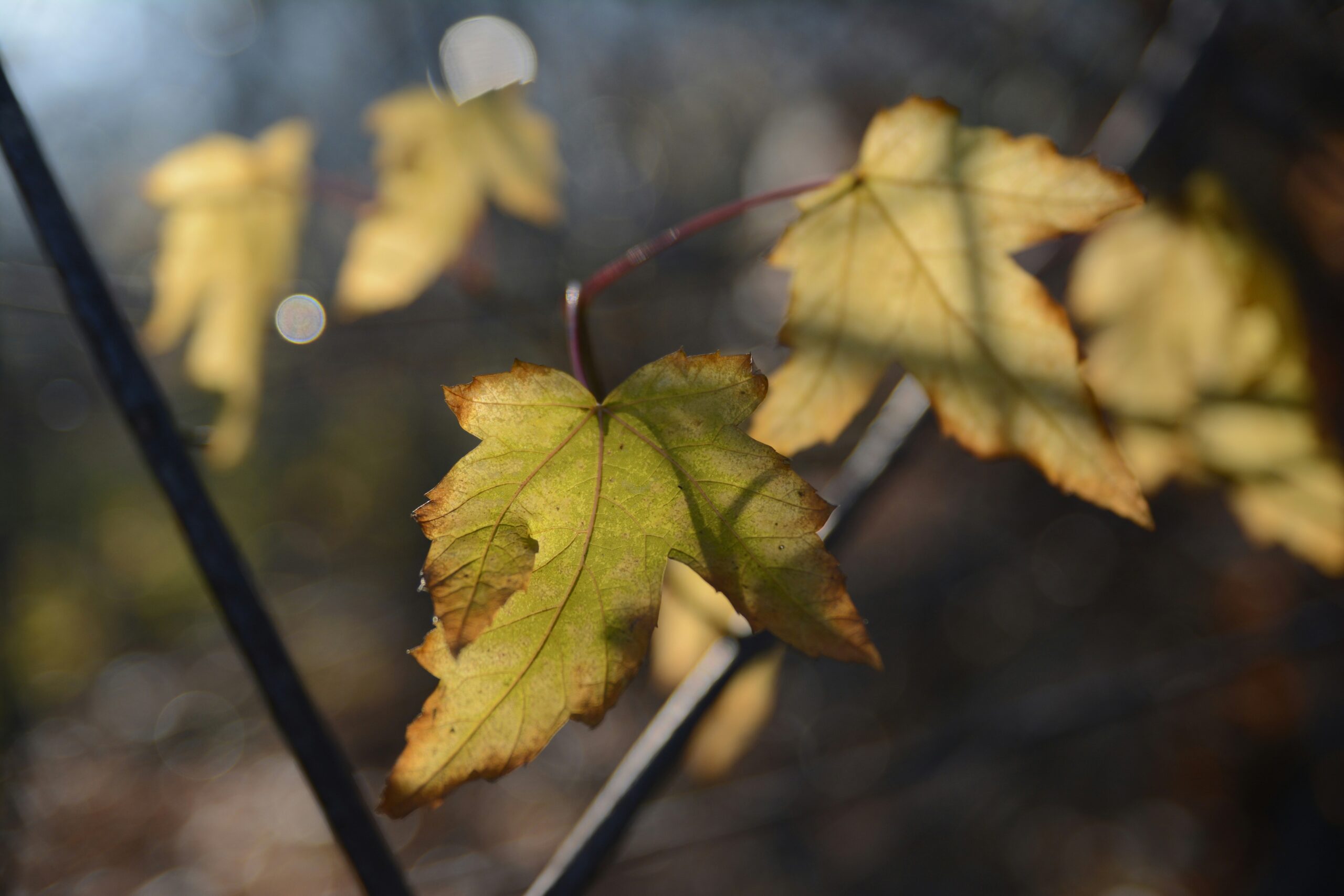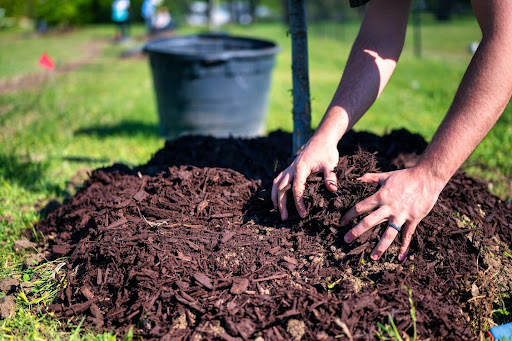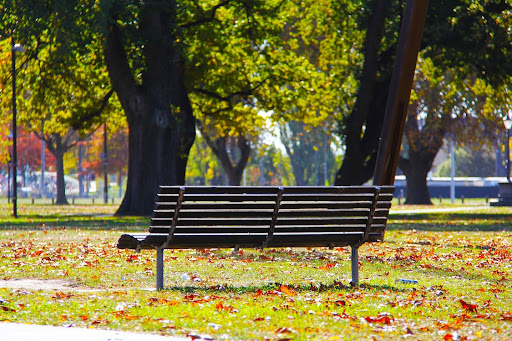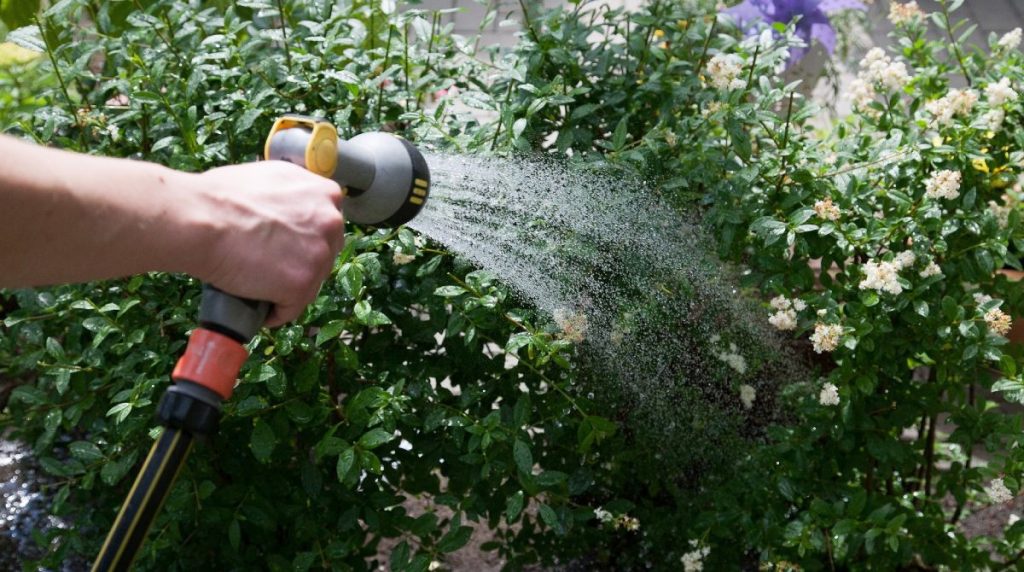
Date August 12, 2021
Category
Summer in Texas means long days of sunshine, heat, and possibly drought. During this time of the year, it’s important to monitor the health of your trees to determine if they need supplemental water. Young trees are especially vulnerable to harsh weather conditions and will need special attention during the worst of the summer, but you should also watch your mature trees for signs of stress. Below is a guide to know when to water your trees and how to water them correctly.
Why do trees need water?
Water is vital for trees because they need it for photosynthesis. During photosynthesis, trees absorb carbon dioxide and water from the air and the soil. They transform the water into oxygen, which they release back into the air, and carbon dioxide into glucose molecules, storing energy. You probably remember that part from biology class, but that’s not all. Only about 10 percent of the water that trees absorb is used for photosynthesis. Most of it is used for transpiration. As the water moves from the roots to the leaves, the water carries nutrients throughout the tree. The water then evaporates from the underside of the leaves (transpiration), which cools the leaves. So water helps your trees do three essential things: create photosynthesis, transport nutrients, and cool their leaves. That’s why they need a lot of it. If they don’t get enough water, tree decline can cause them to be susceptible to pests or diseases.
What happens when trees don’t get enough water?
Trees absorb water and nutrients through their root systems with the help of tiny tubular absorbent outgrowths on the roots called root hairs. During periods of extreme heat and drought, the amount of moisture in the soil declines. When the trees cannot get the water and nutrients they need, their fine root hairs begin to die. If the drought continues, even the primary roots will begin to decline in health. Root decline at that level leads to serious stress for the tree. There are a few signs of decline you should look out for to determine if your trees are experiencing drought-related stress. Look for things like wilting leaves, leaves that prematurely turn yellow, brown, or look burnt at the margin, defoliation or early leaf drop, bark cracking, twig dieback, or secondary issues like attacks by pests, diseases, and fungus. If you notice any of these signs, you should contact a certified arborist to assess your trees and determine a comprehensive health care plan to bring your tree back to health.
When to water your trees
‘To keep your trees and shrubs in optimal health, you need to pay attention to the precipitation events in your area and monitor the amount of moisture in your soil. This will help you determine if you need to provide supplemental water to your trees and shrubs, especially during the summer months. If the ground feels dry down to four to six inches deep, you need water for your trees. If it feels moist, your trees don’t need extra water. Continue to check and water your trees throughout the year, except when the soil is frozen.
How much to water your trees
The health and survival of trees depend on getting enough water throughout the year. Young trees and newly transplanted trees, in particular, need a special young tree care plan that includes a lot of water for the first few years to help them get established and thrive in their new environment. The first three years are the most critical. Depending on on-site location, soil type, drainage, and rainfall, a tree should get about five to ten gallons per week per caliper inch. To determine the caliper inch, measure the diameter of the trunk six inches from the ground. In spring, fall, and winter, provide five gallons of water per caliper inch. During summer, increase the amount of supplemental watering to ten gallons per caliper inch. You need to keep the soil moist but not water-logged. During a week of heavy rainfall, skip the supplemental watering. Be careful not to over-water your trees as that can cause serious damage to the tree’s roots or even kill young trees and shrubs. So look out for signs, such as water sitting at the base of the planting hole and water-logged soil.
How to properly water your trees and shrubs
When watering your trees and shrubs, you’ll need to keep a few things in mind. One of the most important things for you to understand is your property’s drainage conditions. If your soil drains quickly, it will require more frequent watering. Another important thing to understand is that watering requirements for newly planted trees are different from the watering requirements of a mature, well-established tree. For a newly planted tree, you’ll need to focus on watering the root ball and just beyond. Whereas for large trees, you should water the area under the canopy, extending a few feet beyond the dripline, the outermost circumference of the tree’s canopy. Do not focus the water at the tree’s base, as most of the tree’s fine feeder roots are located a few feet away from the tree’s trunk. Ideally, it would help if you watered your trees twice a week to give the soil time to dry between watering, but again, that depends on the drainage conditions of your property. Several methods are available when watering your trees and shrubs, such as with a hose, a soaker hose, a sprinkler system, or even a bucket. If you are watering your trees with a hose, you’ll need to rotate the hose around to various points under the canopy of your large trees to make sure it soaks the entire root system. The best way to water your trees is with a soaker hose or a drip irrigation system, and the best time to water is at night or early in the morning to reduce evaporation loss. Established trees, especially if you have native Texas trees that are drought-tolerant, might not need as much supplemental watering. Do some research on your specific trees to understand their watering needs better because irrigation schedules and amounts may vary depending on the type of tree you have.
Mulching protects your tree’s roots.
Hot, dry weather can damage your tree’s roots and cause lasting effects. To protect your trees and shrubs, you should ensure they have a layer of mulch, which acts as a protective layer over your tree’s roots by keeping the soil moist and cool. Just make sure to use proper mulching techniques. You don’t want to over-mulch, as that can cause a host of other issues. Put down a layer of mulch about two inches thick and keep the mulch a few inches away from the tree’s trunk.
Have questions? TreeNewal can help!
If you have questions about watering your trees, our ISA Certified Arborists are available to visit your property and assess your tree’s health. TreeNewal is a certified arborist tree service with multiple certified arborists on staff and a team of highly qualified tree care experts. If you need professional tree care, our Dallas-Fort Worth tree doctors are the best in the business. They can make knowledgeable recommendations for optimizing your tree’s health. We care about tree health care at all stages of the tree life cycle. We are experts on both young and mature trees, and we offer a full range of expert tree care services, such as tree trimming and pruning, disease and pest control, root aeration, tree removal, and much more. For more information, go to our website at treenewal.com. To set up an appointment, call us at tel:(817) 592-6846.
To learn more about The Correct Way to Water Your North Texas Trees, call our Argyle and Southlake-based teams
at tel:(817) 592-6846 or send us a message.
We’re a little different than the average tree services company.
Learn more about TreeNewal’s ISA Certified Arborists!
Our Dallas/Fort Worth-based tree doctors can explain how sustainable tree care services add more value to your bottom line.
Healthy trees, healthy lives.
